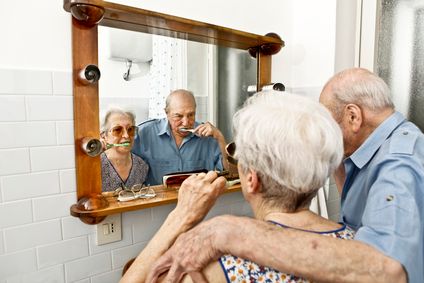Maintaining Daily Dental Care for Seniors
Providing daily mouth care for aging family members can be challenging. Learn how to perform mouth care, care for false teeth, and check for oral health issues with our helpful tips and advice. Call your dentist for additional support.

Ensuring daily dental care for seniors is crucial for their overall well-being. As your loved ones age, there may come a time when you need to provide them with oral hygiene assistance. This task may initially seem unfamiliar, so it's essential to approach it with patience and care. Respect your family member's preferences, and if they resist your help, choose your battles wisely. In case of difficulties, don't hesitate to seek advice from your dentist. Here are some helpful tips for providing mouth care:
- Positioning Matters: Stand behind your aging family member while they sit in a chair in front of the sink. This allows you to replicate the same brushing and flossing motions you use for your own teeth.
- Choose the Right Tools: Opt for a soft toothbrush or consider an electric toothbrush if your family member prefers it.
- Post-Brush Rinse: Encourage your aging family member to rinse with warm water after completing their oral care routine.
Caring for False Teeth or Partial Dentures:
- Learn from Them: Let your aging family member guide you in the process of removing their false teeth or partial dentures. When reinserting them, start with the upper set before the lower set.
- Daily Cleaning: Ensure that both types of false teeth are cleaned daily.
- Inspect for Damage: While the teeth are out, inspect the dentures for cracks. If you discover any, contact the dentist promptly to arrange for repairs.
- Proper Storage: Fill a container with water for denture storage.
- Thorough Cleaning: Scrub the false teeth or partial denture using a denture brush and soap.
- Rinse Thoroughly: Rinse the dentures with water once the cleaning is complete.
- Overnight Soaking: If your family member soaks their false teeth overnight, they might use a special denture cleanser. Some also opt for a mixture of warm water and vinegar (half and half). If the denture contains metal clasps, use warm water only for soaking.
Monitoring the Mouth's Interior:
- Ask for Consent: Always request permission to examine the inside of your loved one's mouth.
- Thorough Examination: Carefully inspect the mouth for any signs of concern, such as swelling, red or white patches, or changes in gum color.
- Act Promptly: If you observe any of these issues, promptly contact the dentist for further evaluation and guidance.
- Gentle Care: Clean and gently massage the inside of the person's mouth using a damp cloth or a soft toothbrush.
By following these guidelines and demonstrating sensitivity to your aging family member's needs and preferences, you can ensure their daily dental care remains a vital aspect of their overall health and well-being.





